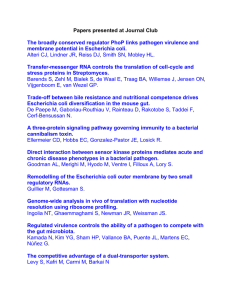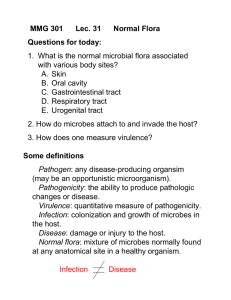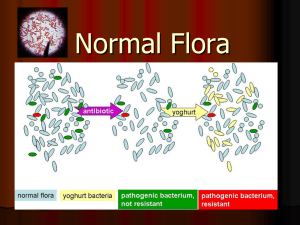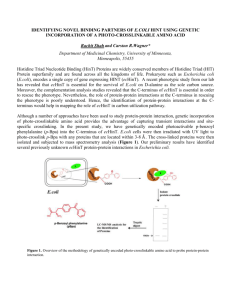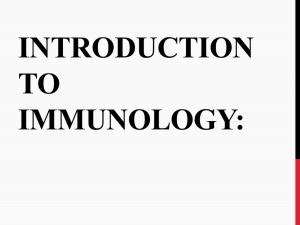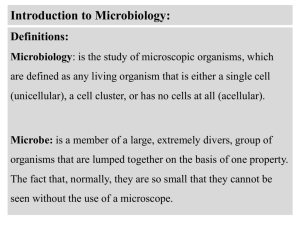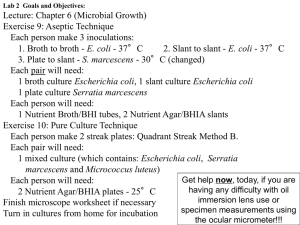Microbial Flora of the Human Body
advertisement
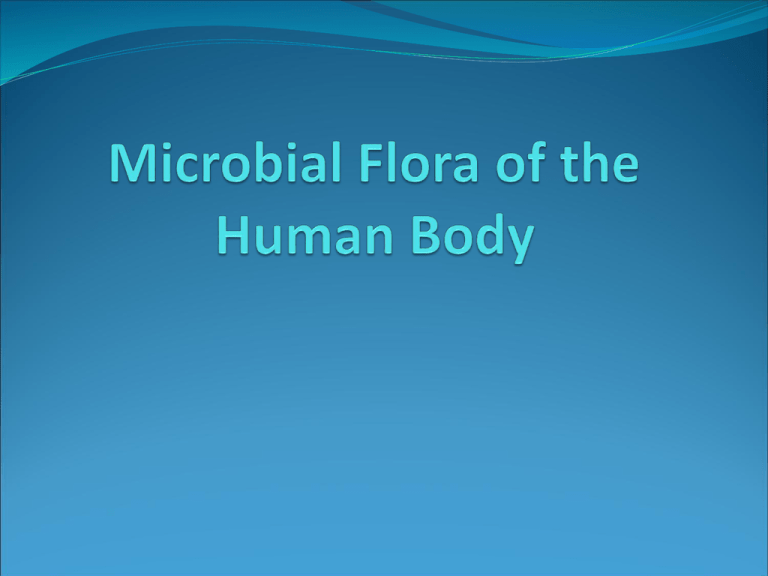
Normal Microbial Flora 1. Resident Flora Microbes that are always present 2. Transient Flora Microbes that live in or on your body for a period of time (hours, days, weeks, months) then move on or die off Symbiotic Relationship 1. Mutualistic Both organisms benefit – “mutually benefical” 2. Commensalistic One organism benefits, the other is neither helped nor harmed 3. Opportunistic Under normal conditions, microbe does not cause disease, but if conditions become conducive , it can cause disease Mutualistic Escherichia coli Synthesizes Vitamin K & B complex Vitamins In return, we provide a warm, moist nutrient rich environment for E. coli Commensalistic We have no Commensalistic relationships with Bacteria If Bacteria are in or on our body, they are either helping us (Microbial Antagonism) or harming us. Opportunistic Escherichia coli - normally in our digestive tract where it causes no problems, but if it gets into the urinary tract it can become pathogenic. Staphylococcus aureus – commonly found in the upper respiratory tract, but if it gets into a wound or a burn it can become pathogenic



